Giving goes digital: Amid national donation slump, giving has never been easier
After three consecutive years of record-setting highs, the rate of charitable donations in the U.S. saw a decline in 2022, according to the annual report from Giving USA. The dip coincided with a number of things, including inflation having shot up the year before, falling stocks, and the end of pandemic assistance programs like federal unemployment insurance.
Not surprisingly, organizations like The Salvation Army began feeling the impact from both ends, as donations shrunk and needs increased.
"Things have become so costly, everybody is struggling to figure it out," said Migdalia Lavenbein, major for Connecticut and Rhode Island chapter of The Salvation Army Southern New England Division.
According to Lavenbein, this past June, the food pantry serving Greater Hartford, Connecticut, saw 1,000 new faces, or people who at least hadn't been through during the fiscal year.
"That is a big number, and it's not decreasing," she said. "It just seems to keep climbing at, really, an alarming rate."
Story in the numbers
Lavenbein's observations line up with national data pointing to economic downturn, at a time when experts have been speculating whether the U.S. is on the verge of full-on recession.
From 2021 to 2022, The Salvation Army's total expenses went up $186,419 ($3,555,778 to $3,742,197). While that jump may be considered unsubstantial, public support — like the donations taken in by holiday season kettlebell collections — dropped by $3,752,443, or 64% ($5,795,448 to $2,043,005).
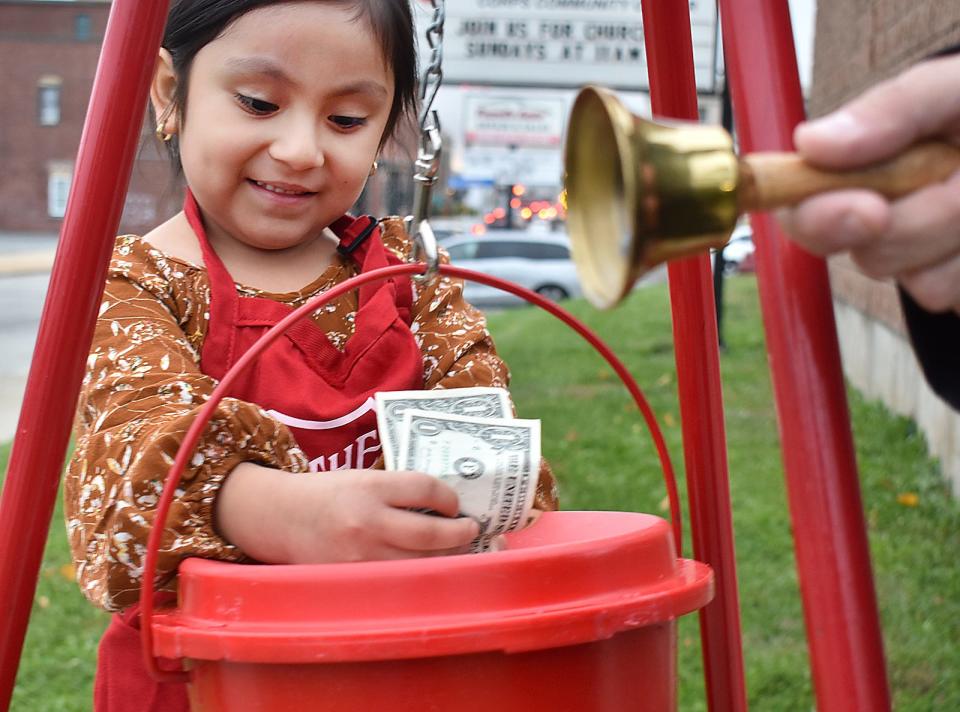
Though data on U.S. donations at-large doesn't show as steep of a drop-off between the same years, it similarly follows a sudden, downward trend.
More: These New Englanders found ways to give back that work for them. What's yours?
A national look: Is a recession coming? Or will it be a soft landing? Pay attention to these market signals
In 2022, total U.S. giving totaled $499.33 billion — a 3.4% decline over the previous year — ending a streak of annual increases that began with a breakthrough year in 2019. When adjusted for the dramatic jump in inflation that began in 2021, that decrease comes to 10.5%, according to Giving USA.
Adapting to the times
In her 26 years with The Salvation Army, Lavenbein says she's seen the organization do a lot of adapting to shifting norms.
"One thing is, most people don't carry cash anymore ... which has made it difficult collecting at the kettle," Lavenbein said. "Another thing is less stores allow us to stand at them or inside. That probably started 5-10 years ago."
As such, Lavenbein says much attention has been put on integrating technology into how the organization goes about donation collection.
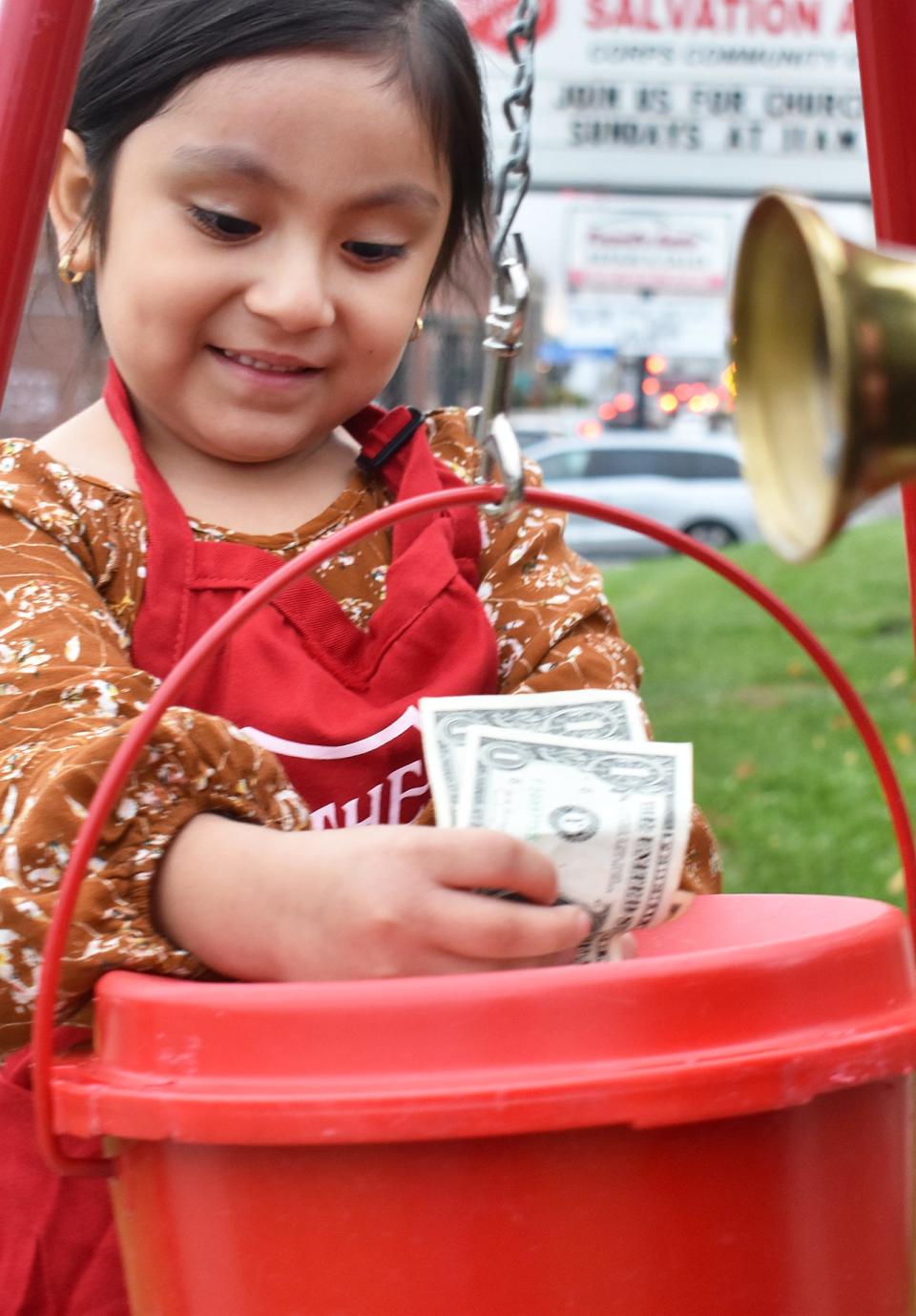
"There's greater emphasis on collecting online, doing peer-to-peer challenges with online kettles," she said. "Now you may notice we have QR code signs on kettles for people to be able to donate electronically when they see us out but don't have any cash on them."
Despite this, traditional kettle collections continue to be the dominant donation method in Connecticut and Rhode Island, with $458,688 collected in 2022 vs. $853,331 brought in digitally in 2022, according to data provided by The Salvation Army Southern New England Division.
Kettlebells set for another upgrade in 2023
This year, The Salvation Army is making it even easier to donate at kettlebell sites, with the addition of "TipTap."
"[Donors] would hold their debit or credit card up to one of the three denominations and then tap their card. This instantly makes a donation," said Michael Baldelli, public relations and marketing manager for The Salvation Army Southern New England Division for Connecticut and Rhode Island.
Other giving options
Baldelli said those who choose to scan kettlebells' QR codes with their phones have the option to donate via Apple Pay, Venmo, Google Pay, or credit/debit card.
Alternatively, people can donate anytime by texting KETTLE to 31333, or visiting salarmy.us/SneRedKettle.
Jimmy Fund Walk shows cause for optimism
With limited data for the current year, it's hard to draw any conclusions on giving trends for 2023. But if one is looking for a ray of hope, they need not look further than Boston, where, after donations fell during the pandemic years, the Boston Marathon Jimmy Fund Walk on Oct. 1 showed a new level of promise.
"It's looking like we're on pace to break $9 million for the first time," said Jimmy Fund Walk Director Zachary Blackburn, noting approximately 8,500 participants this year. "That's the highest we've had since about 2018."
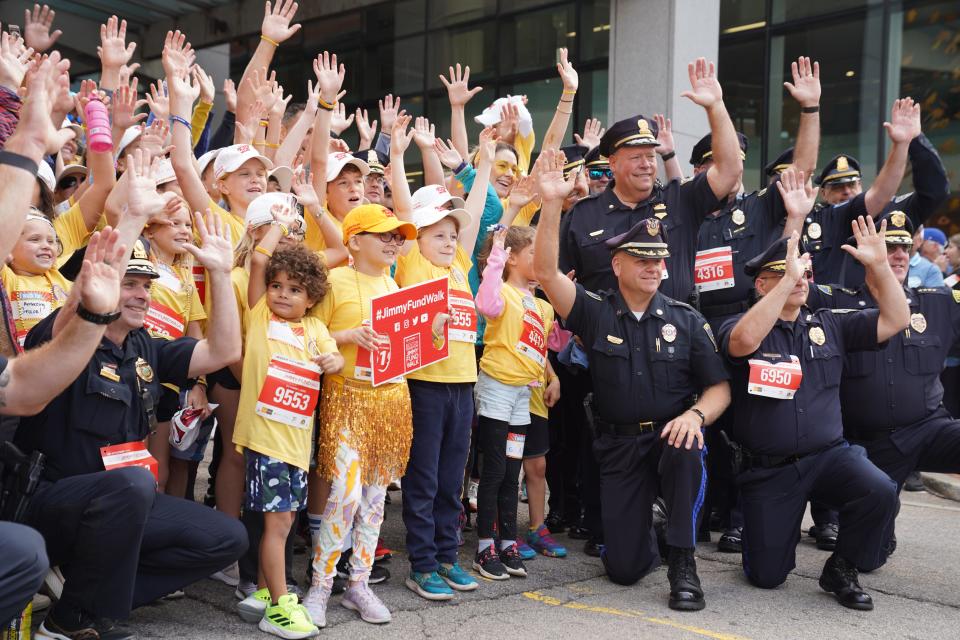
Fundraising totals and participation from recent years clearly shows the COVID drop-off and subsequent recovery:
2019 — $8,467,485 raised from 8,087 participants
2020 — $6,025,310; 6,494 participants
2021 — $6,890,430; 6,107 participants
2022 — $8,460,167; 7,601 participants
'Event-based fundraising' has unique niche
According to Blackburn, event-based fundraising like the Jimmy Fund Walk is "kind of a unique outlier."
Rather than the Jimmy Fund soliciting donations directly, the walk participants — whose reasons for taking part usually revolve around personal experiences with cancer — have the effect of personalizing the act of giving for the donors, Blackburn said.
"We have a slogan: 'We are Jimmy.' You're average person wants to support the cause, but what better way than to do it than on behalf of someone you love?" Blackburn said.
Internet gives walkers a leg-up
Recent years have brought a great deal of digital integration to the Jimmy Fund Walk, Blackburn said, from a mobile app walkers can use to fundraise, to the ways they get word out about their campaigns.
"When I first started in this industry 25 years ago, it was letter-writing to friends," he said. "Now people are using Facebook, TikTok.... The internet makes it so easy to reach a lot of people really quickly."
"My past couple of walks I've used Facebook. Before it was more just word of mouth," said Quincy resident and longtime Jimmy Fund walker Carol Gormley. "Facebook makes it easy because you're able to create a fundraiser right there."
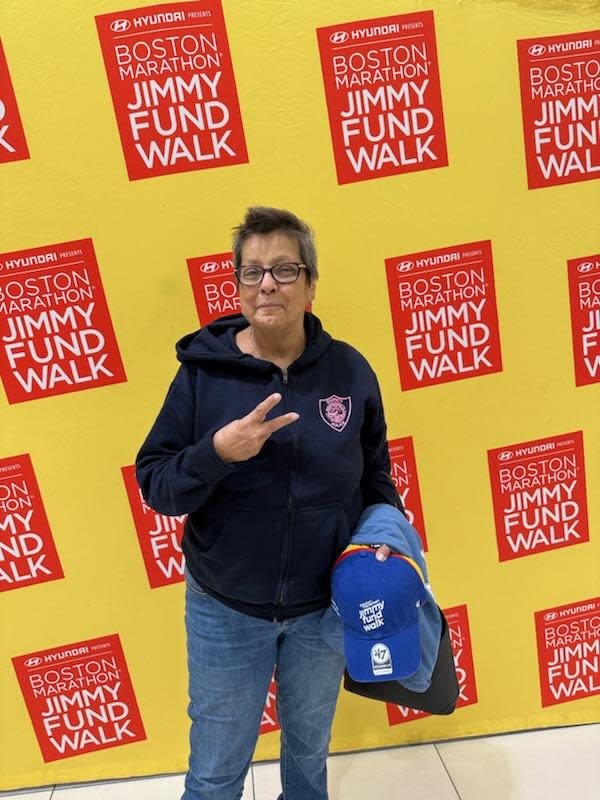
Before utilizing Facebook, Gormley said she'd typically average "probably around $1,200." This year, she raised $1,910.
If interested in participating in next year's Jimmy Fund Walk or making a donation, visit danafarber.jimmyfund.org.
Playworks New England powers through COVID slump
For Playworks New England, a nonprofit aimed at supporting schools and youth through "the power of play," COVID could have been a leg-sweep when it came to fundraising efforts, which had largely been in-person, event-based functions. But for an organization that also had to figure out how to continue programming with students, fundraising was just another adjustment.
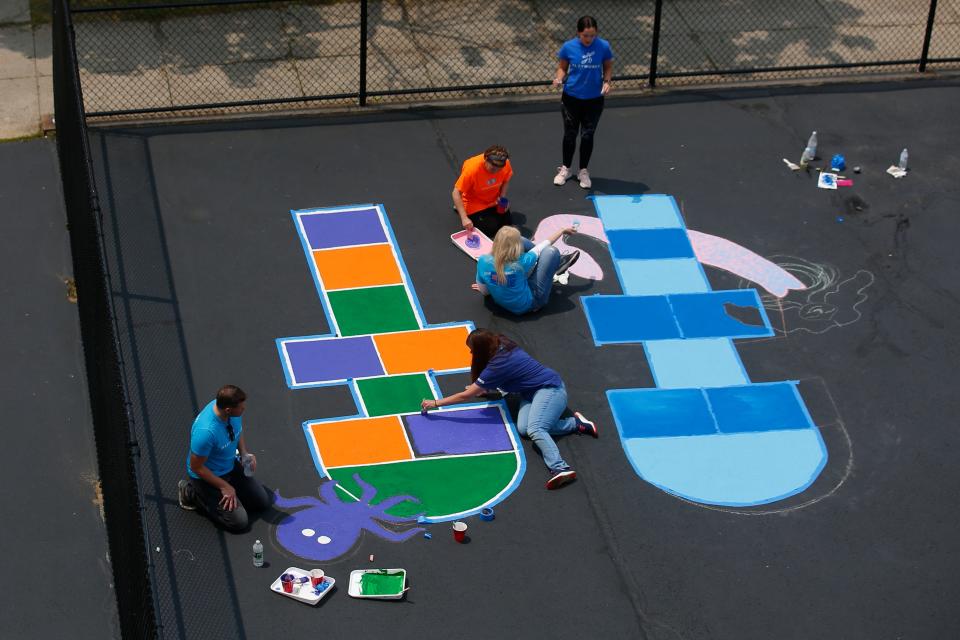
"During COVID when we weren't able to gather in person for events, we held a virtual national fundraising event called Let's Play ... highlighting how important play is and demonstrating to attendees how we continue to play during Zoom school," said Senior Development Associate Leah Kelly. "In New England, we also moved some of our signature corporate engagement events into a virtual setting, hosting 'Virtual Corporate Recesses' for companies and allowing employees to connect with their colleagues and build a sense of camaraderie through games and through play."
But even this wasn't enough to save Playworks New England's donation levels from falling to $834,000 in 2021, down from $1.6 million the year before.
"The majority of the fiscal year fundraising was completed prior to the start of COVID," Development Director Heather Crowley said of 2020.
Post-pandemic, things have begun to turn back around, with $969,0000 raised in 2022, and Playworks' confidence in breaking $1 million for 2023.
"We are poised to realize this goal by the end of our fiscal year," Crowley said. "I think a lot of people just love the idea of giving kids the opportunity to learn through play, to gain the skills that they'll need not only on the playground, but in the classroom, in the community, and at home."
Hometown help
While giving from foundations and corporations increased from 2021 to 2022, making up a combined 30% of all U.S. giving, individual giving — which accounted for 64% of all giving — decreased by 6.4%, according to Giving USA.
For a small, local organization like the King Street Center in Burlington, Vermont — which supports local youth with educational programs, food distribution and other services — this is especially concerning.
"Over 75% of King Street Center’s annual $1.7 million budget comes from private donors," Development and Communications Associate Kate Vetter said.
"Having been in the Burlington community for almost 52 years, we are fortunate to have longstanding relationships with some funders. However, much of our support comes from hundreds of community members and many local businesses with a desire to help and know the profound impact that King Street Center has on the community’s children and families."
According to Vetter, 97% of families served through King Street Center receive child care subsidies, "and an overwhelming majority of them are food insecure."
"King Street Center is a critical source of food for many, serving over 25,000 meals per year," she said, noting about 120 children a day receive warm meals. "Our supporters are keenly aware of how vital our organization is to the overall health of our community."
To raise funds and visibility, King Street Center hosts events such as the Annual King Street Center Golf Invitational and King Street Center Block Party; and donations can be made anytime online at kingstreetcenter.org.
In the internet era, GoFundMe became a household name
When it comes to digital donations, GoFundMe — a platform that allows individuals to create their own online fundraisers for just about any reason — is an entity that readily comes to mind.
In fact, for every second spent reading this article, another donation is being made through the site, according to data from GoFundMe, which is recognized as a 501(c)(3) nonprofit.
"GoFundMe started as a place for people to raise money for celebrations and vacations," said GoFundMe COO Soraya Alexander of the platform's start in 2010. "Over time, people started to use it for a whole range of things important to them — everything from chasing a dream and addressing social causes, to paying for tuition and life-saving surgeries."
GoFundMe trends are telling of the times
The user-led nature of GoFundMe has allowed it to organically cater to the needs of the day, according to Alexander.
"For example, since the pandemic-era free school meals program ended this year, we have seen a 5X increase in fundraisers started to help combat student lunch debt," she said.
Remember this local campaign?: New Bedford locals, NBFD want to help firefighters in Maui, including a city native.
"Earlier this year, we saw a spike in people fundraising for business and education; with fundraising for business increasing more than 25% and tuition fundraisers up more than 50% around the new year."
These boosts come at a time when colleges have been seeing significant jumps in applicants for the past three years, according to collegedata.com, and persisting high rates of corporate layoffs.
While GoFundMe's year-to-year donation totals aren't made public, the company's latest annual report shows 28 million people sent or received donations in 2022. Some highlights for the year included a 110% increase in fundraising for baby formula and a 60% increase in those for gasoline.
Through the years, medical expense has remained one of GoFundMe's most active categories, according to a GoFundMe spokesperson.
GoFundMe hopes acquisition breathes new life into 'giving landscape'
In 2022, GoFundMe acquired Classy, a company that provides digital fundraising tools for nonprofit organizations. According to Alexander, who serves as president of Classy, the move was made in hopes "to reinvigorate the giving landscape."
"Over the past year, we have seen individual giving to nonprofits decline for the first time in decades...," Alexander said. "[GoFundMe] is a very powerful, very broad on-ramp for giving, and our focus has been on learning more about how to make this on-ramp accessible for the nonprofit sector.
"We’ve been talking to customers, analyzing our first-party data, and testing ideas to create a more connected and scaled community of philanthropists."
To browse fundraisers to donate to, or to start one, visit gofund.com. To learn more about Classy, visit www.classy.org.
This article originally appeared on Standard-Times: New England nonprofits power through post-COVID donation drop

